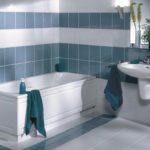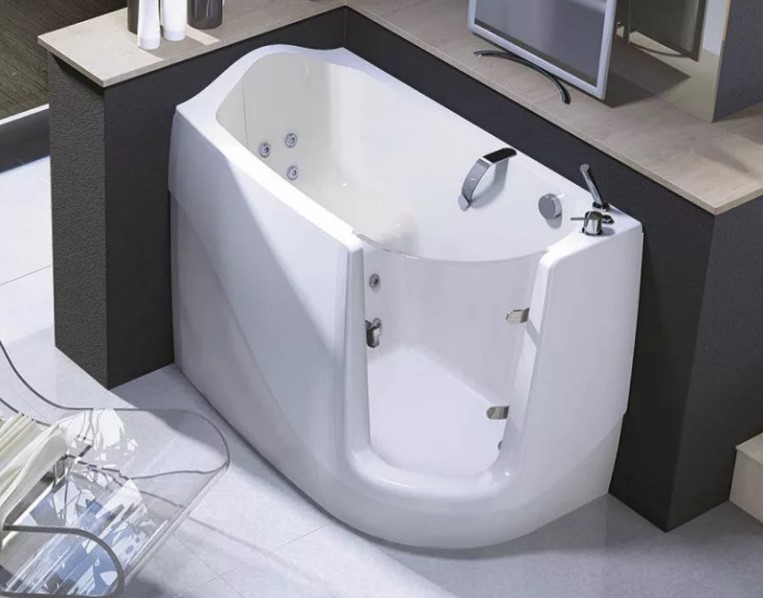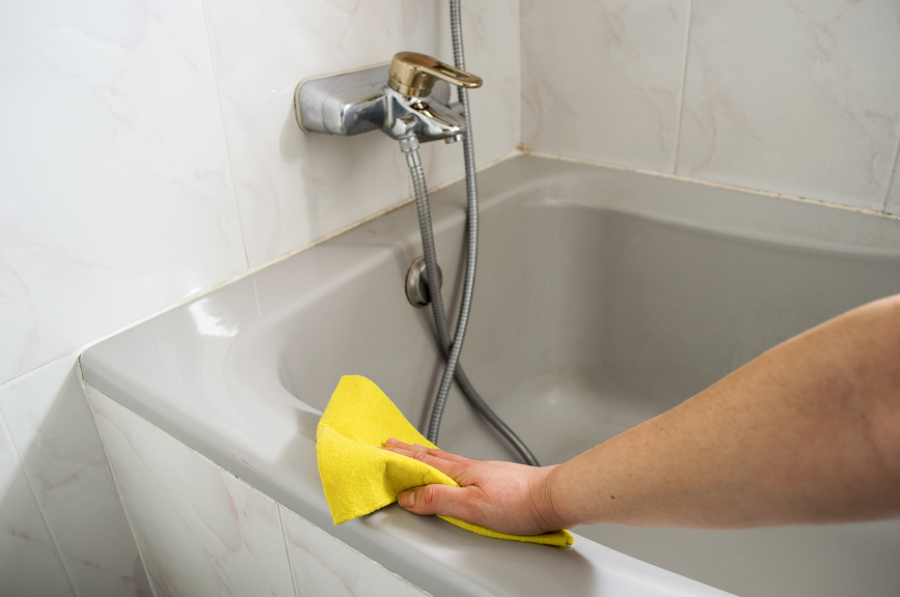How many liters are in the bath?
In recent years, the installation of compact showers in bathrooms, especially small-sized ones, has become increasingly popular. However, most people are in no hurry to give up the pleasure of soaking in a bath filled with warm water and fragrant foam. Children are especially happy about this opportunity. So how many liters of water are consumed when taking one such water procedure? Let's get into it.
The content of the article
Standard bath volume 1.7 m and 1.5 m in liters
In plumbing stores, where most people shop, you often find standard-sized bathtubs in the shape of an elongated bowl with a slight slope at the back and sides at the top. The outer edge of the sides forms a rectangle (for ease of installation in a corner or along a wall). It is precisely these rather cumbersome plumbing structures that are present in 90% (no less) of the apartments of our compatriots.
According to metrologists, the volume of such a cast iron bath, 1.5 m long and 0.4 m deep, ranges from 140 to 170 liters, depending on its width. If the length is 1.7 m, it can hold from 180 to 245 liters of water.
In old housing stock, sometimes there are “sitz” baths of 1-1.2 m. Their volume is 95-100 liters.
Attention! Length and width in this case mean the distance between the two outer opposite edges.
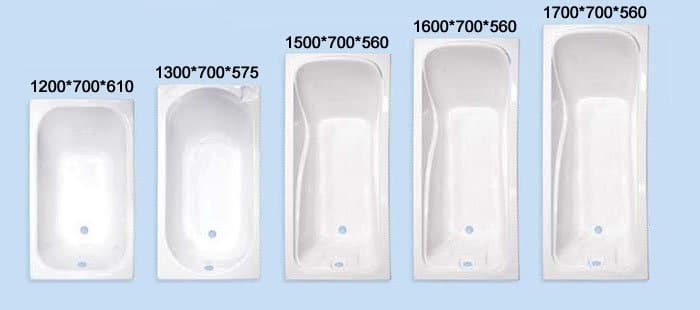
How to measure the volume of your bathtub?
The capacity is usually specified in the documentation that comes with the product upon purchase.
By the way! The passport usually indicates the filling capacity up to the overflow line.
If the document is lost (let’s say the plumbing is 10 years old or more), and you want to independently determine the volume of your bathtub, there are three options for how to do this.
 If you have water meters, use the easiest method. Before the next water procedure, record their exact readings on paper (including all black and red numbers), then fill the bath. After this, write down the new data and calculate the difference. This method is good because it does not depend on the shape of the bathtub and is suitable for any model, and the calculation itself is simple and will not take much time - exactly as long as water is collected, plus 2-3 minutes to solve a simple example.
If you have water meters, use the easiest method. Before the next water procedure, record their exact readings on paper (including all black and red numbers), then fill the bath. After this, write down the new data and calculate the difference. This method is good because it does not depend on the shape of the bathtub and is suitable for any model, and the calculation itself is simple and will not take much time - exactly as long as water is collected, plus 2-3 minutes to solve a simple example.
By the way. In the absence of meters, payment is made according to standards, and they do not depend on the actual amount of resource consumption, so you can pour water calmly.
If you want to train your brain, try the second method. It will require the following actions:
- first of all, figure out what geometric figure the inner surface of your bathtub resembles (school knowledge of stereometry for grades 10–11 will come in handy);
- remember the formulas for the volume of a parallelepiped, sphere, ellipsoid, cylinder, truncated pyramid, etc.;
- take the necessary measurements and make calculations.
With this method of calculation, errors are inevitable, since only a few bowls can “boast” of an ideal geometric shape.
If you want to get the most reliable information about the displacement of the bathtub, stock up on a canister (a 5-liter bottle will do) and patience. Of course, you will spend a lot of physical strength, but your soul will be calm.
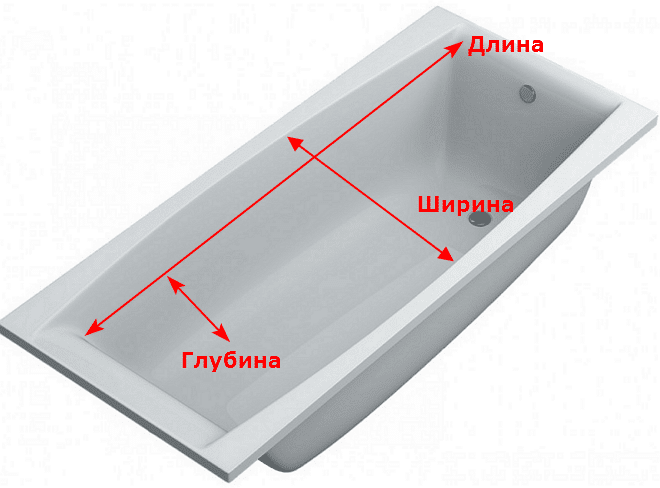
Calculation example
Let's consider simple option. Let us denote the initial readings of the cold and hot water meters as a and b, and the final readings as a1 and b1. To calculate how many liters of water was used, use the template:
((a1+b1) — (a+b))
Experiment in my bathroom:
a = 337960, b = 77750, a1 = 338100, b1 = 77840;
V = ((338100+77840) - (337960+77750)) = 230 l.
Complex option. I have a standard cast iron bathtub 170x70x40. Its internal shape can be called conditionally a parallelepiped (more simply, rectangular).
I measure the required values (at the level of the overflow line, in cm):
- L(length) = 150;
- B(width) = 55;
- H (height) = 30.
I plug my numbers into the formula:
V = L×B×H= 150×55×30 = 247.5 l.
It turned out to be more than in previous calculations. It's understandable the narrowing and rounding of the surface downwards, on the sides and the bevel of one of the walls was not taken into account. Hence the extra liters.
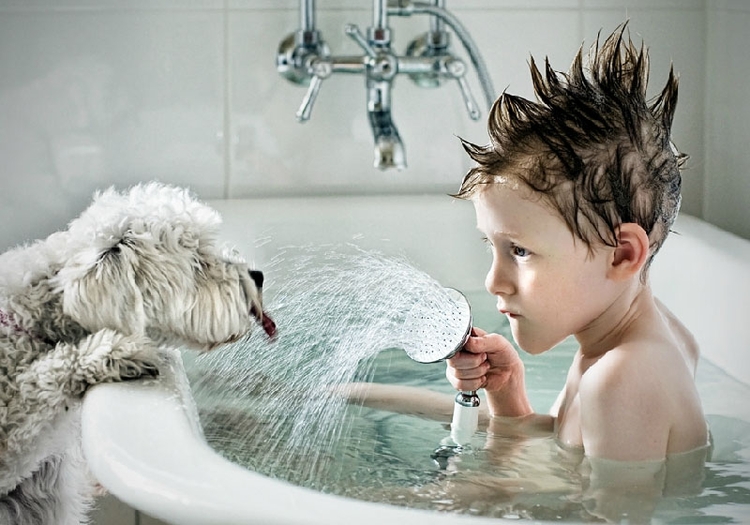
We determine the sizes of various shapes and types of bathtubs
The displacement of each bathtub is determined primarily by its internal shape. Now there are many different models on the plumbing market. We've sorted out the rectangular bathtub, let's consider other options.
Rectangular with beveled sides
The volume of such a bath is calculated using the formula for a truncated pyramid (only in our case it is inverted):
V = 1/3H×((L1×B1+ L2×B2+√¯(L1×B1×L2×B2)),
where H is the height, L1 and B1 are the length and width of the bottom, L2 and B2 are the length and width of the water surface, √‾ is the square root.
Round
Calculate the volume of half the ball:
V = (4/3×π×R3):2,
where R is half the diameter of the inner surface at water level. The calculation will be almost ideal if this value coincides with the depth.
Oval
If the bath is in the shape of half an ellipsoid (a ball, flattened from the sides and elongated in length), we use the expression:
V = (4/3×π×½L×½B×H):2
π=3.14, ½L, ½B and H, respectively, half the length, half the width and height. If the last two indicators are equal, the result will be more plausible.
If the bottom is not sloping, but flat, calculate the volume of a cylinder with an oval base:
V = π×½L×½B×H,
using the same measurements as in the previous case.
Corner
We will assume that its shape is similar to a quarter of an ordinary or elliptical cylinder.
For the symmetrical option:
V = (π×R2×H):4,
where R is the length of one of the internal walls coming from the corner of the bathroom (they are the same), and H is the depth.
For an asymmetrical model:
V = (π×L×B×H):4,
where L is the length of the larger wall, B is the smaller wall, H is the depth.
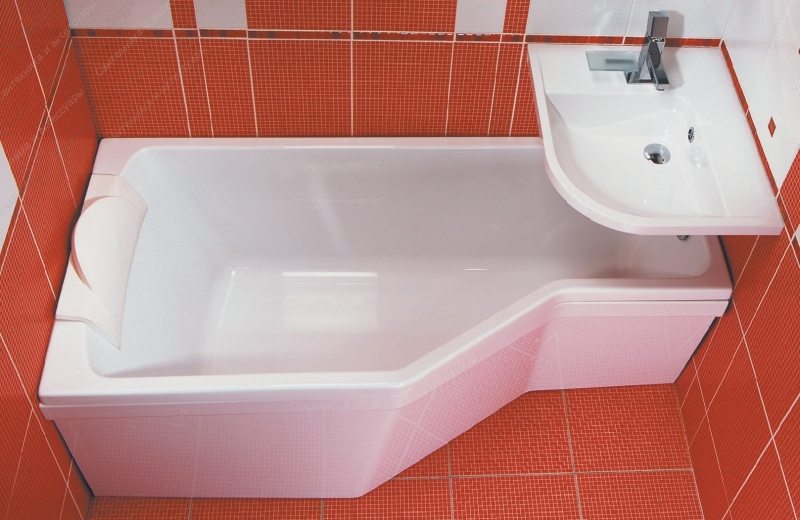
Custom baths
These include specimens that have bevels on one side or bizarre curves. The biggest difficulty arises with measuring just such baths. Their forms can sometimes be “divided” (conditionally, of course) into two or more components from regular geometric shapes, then you will have to create a complex combination of various formulas. Puzzle lovers can try it (nothing is impossible for a person with intelligence). However, I recommend returning to the first measurement method using meter readings.
Baby bath
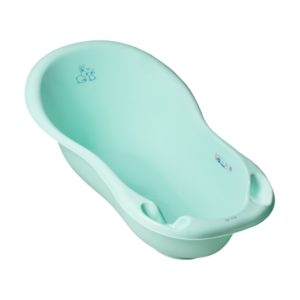 As a rule, it resembles a standard rectangular or oval. You can use the formulas given above, but it is much easier to establish the truth experimentally. The volume of this container usually does not exceed 35 liters. It is recommended to bathe newborns in boiled water and at first there is no need to fill the bath to the brim.So prepare 2-3 5 liter containers in advance, boil the rest immediately before bathing and determine what capacity is needed for bathing your baby.
As a rule, it resembles a standard rectangular or oval. You can use the formulas given above, but it is much easier to establish the truth experimentally. The volume of this container usually does not exceed 35 liters. It is recommended to bathe newborns in boiled water and at first there is no need to fill the bath to the brim.So prepare 2-3 5 liter containers in advance, boil the rest immediately before bathing and determine what capacity is needed for bathing your baby.
How much water is needed to take a bath?
For one water procedure, 100-150 liters of water is enough if the bath is no more than 170 cm in length. You can fill up to the overflow hole, but you need to remember Archimedes' principle. Let's paraphrase it this way: the larger the body placed in the filled bath, the more water it will displace from there. If you like to save money, pour only as much as is necessary for complete immersion, no more.
In Russia, unlike many European countries, the payment for a cubic meter of water according to meters is quite affordable. Therefore, many people think less about saving than about personal comfort, which gives them the opportunity to relax in their favorite bath after a busy day at work.


